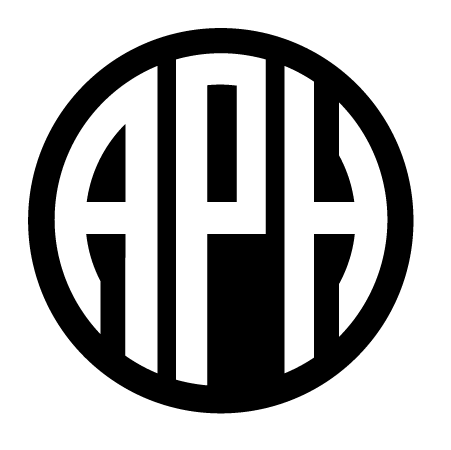
APH News
Your monthly link to the latest information on the products, services, and training opportunities of the American Printing House for the Blind.
February 2004
ENVISIONING in South Carolina
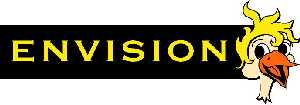
South Carolina AER members enjoyed beautiful weather, scrumptuous seafood, delightful downtown Charleston, and a double dose of ENVISION when they convened in Mt. Pleasant, SC on January 22 and 23 for their annual conference. Field Services Representative Sandi Baker joined 65 conference attendees to engage them in 2 sessions of hands-on activities as they experienced ENVISION, APH’s training curriculum for teaching students to use near and distance optical devices. During this hands-on training, participants heard stories about Emmy the Emu and her brothers in the Australian outback, and were led through a variety of fun activities that teachers will use with their students as they teach them to use their devices.
APH Workshop for State Assessment Personnel
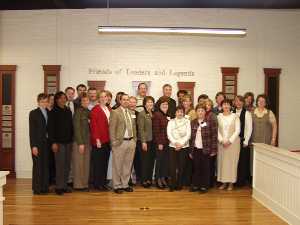
The Accessible Tests Department hosted a workshop, Making Tests Accessible for Students with Visual Impairments, at APH, January 14-15. The historic event, similar to one offered for test publishers in the fall, attracted 26 participants from 13 states. Those attending the training included state assessment personnel as well as representatives from the United States Department of Defense and two test publishing companies. The workshop provided information regarding test development and adaptation to ensure accessibility for students with visual impairments and to address other critical issues involved in providing accessible tests.
Dr. Carol Allman facilitated the sessions with additional presenters including Suzanne Swaffield, sharing improvements in South Carolina’s testing, and Linnie Calland discussing issues involved with Kentucky’s online testing. APH staff presented guidelines and research associated with producing the most readable large print text and graphics, tactile graphics, testing via audio media, APH products useful for testing, and other available resources. Participants also enjoyed reviewing APH’s new large print color textbooks and touring the facilities.
Historic Schools on the APH Web Site!
Building a Future: U.S. Residential Schools for Blind and Visually Impaired Students
A new addition to the APH web site displays historical images of schools for the blind with information about the buildings. sites.aph.org/museum/schools/index.html
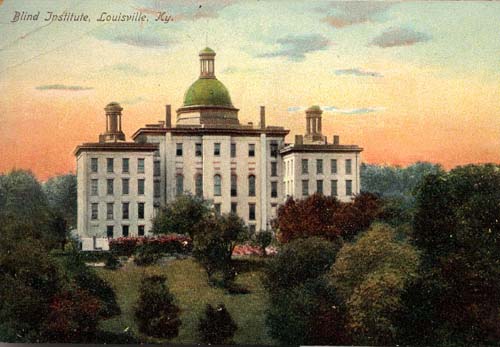
The schools are presented chronologically, in order of their founding. Eight of them appear on the National Register of Historic Places. The extant buildings are noted.
This presentation is based on an exhibition, Building a Future: U.S. Residential Schools for Blind and Visually Impaired Students, which may be rented by organizations. For additional information contact Carol Tobe, Director, Callahan Museum, 800/223-1839, ext. 365, or ctobe@aph.org
APH InSights 2004 Art Competition and Exhibition
Artists of all ages who are blind or visually impaired are invited to submit artwork for the thirteenth annual international art competition, APH InSights 2004.

Last year, over 400 entries were received. From these, jurors selected seventy-two pieces for the exhibition, which was shown in Louisville in October, and which will soon be on view on the APH accessible web site: archive.aph.org
Artists may enter artwork created in any visual art medium, including (but not limited to), painting, drawing, printmaking, fiber, metal, or wood. Award winners receive a cash award and a ribbon. They are invited to come to Louisville to receive their awards at the October meeting of Ex Officio Trustees. Last year, seventeen award-winners attended the Friday evening banquet held in their honor. (While APH cannot pay the full travel cost of those attending, a stipend to assist with travel is available.)
There are two deadlines: April 1 is the deadline for entries from preschool through high school; April 15 is the deadline for entries from adult artists.
Rules and forms are posted on the web site: archive.aph.org. Artists may also contact APH to request a copy of the entry form and rules of the competition: 800/223-1839, ext. 357 or rwilliams@aph.org
Photo: Winter Solace, a watercolor by APH InSights 2003 artist Lucille ‘Honey’ Knechtel
Be One of the First in Line!
APH is now scheduling Technology Workshops across the country. If you, as a parent, a student, or a teacher of students who are visually impaired, would like to learn more about the latest APH product sensation called Book Port, or the New Louis Database interface, or any of our other technology products and services, visit archive.aph.org/louis/mtech.htm where you’ll find topics for your workshop and details regarding signing up. To schedule a workshop contact: Maria E. Delgado, mdelgado@aph.org
The New Louis Database and AMP Interfaces

On December 15, 2003, we introduced improved interfaces for the Louis Database of Accessible Materials for People Who Are Blind or Visually Impaired and the Accessible Materials Producers (AMP) Database. This upgrade was necessary to accommodate many requests from searchers for changes to the interface over the last few years. Most notably, the upgrade provides much better support for speech and low vision users.
Because we found that those who used certain browsers, especially older versions of Internet Explorer or Netscape, were unable to use the new interfaces, we have kept both "old" and "new" Louis available. We have an automatic re-directing process that should take searchers using older browsers that are not compatible with the new Louis interface to the older interface. Very recently, we modified this re-direction process so that it will do a better job of re-directing you to the best Louis interface for you to use, given the kind of browser you have.
You MAY very briefly see a page that says ‘Search Louis‘ near the top of the page. This page will display only very briefly, and then you will be taken automatically to either new or old Louis depending on the kind of browser you are using. However, if you have Java script turned off on your PC, you will remain at the Search Louis page where you will be given an opportunity to choose to use either the new or old Louis interface.
You may still access the old Louis interface from this URL:
archive.aph.org/louisold.htm
The URL for the new Louis interface is:
archive.aph.org/louis.htm
Sacks & Rosenblum Seek Research Assistance
Dr. Sharon Sacks of California State University, Los Angeles and Dr. Penny Rosenblum of the University of Arizona are seeking students who are low vision and are ages 14 to 18 to participate in a research study. The purpose of the study is to examine the perceptions of adolescents with visual impairments regarding their beliefs about driving and levels of independence. For further information contact Dr. Sacks at Ssacks@calstatela.edu or Dr. Rosenblum at rosenblu@u.arizona.edu
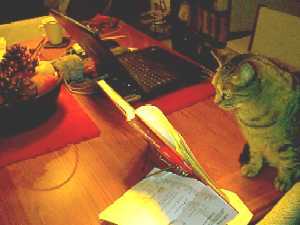
ATIC has been so overwhelmed with work that Betsy Burnham’s cat, Nikki, had to be recruited to help.
New Mexico Now Preparing Teachers of the Visually Impaired
In the fall of 2003 New Mexico State University began offering course work for the preparation of both Teachers of the Visually Impaired and Orientation and Mobility Specialists. For more information on the course offerings or the program contact Dr. Jackie Wood, 505/646-4121 or jwood@nmsu.edu
APH Welcomes New Ex Officio Trustees
Carroll Jackson, Illinois School for the Visually Impaired, replacing Les Stephens
Stephen Barrett, Pittsburgh Vision Services, replacing Jim Baumgartner
Stacy Grandt, Wisconsin School for the Visually Handicapped and Educational Services for the Vision Impaired, replacing Mark Riccobono
Michael Fester, Missouri Division of Family Services, Rehabilitation Services for the Blind, replacing Betty Davidson
Darlene Lee, Connecticut State Department of Mental Retardation, replacing Roger Wiley
Linda Van Eck-Niedringhaus, Missouri School for the Blind, replacing Corinne Harmon (Linda also represents the Department of Elementary and Secondary Education in Missouri)
APH Travel Calendar

February
February 2-4, 2004
Technology in Testing: Advancements and Best Practices-ATP;
Indian Wells, CA
February 3, 2004
APH Products for Low Vision at Univ. of Arizona;
Tucson, AZ
February 7, 2004
Tennessee AER Conference ISAVE Training;
Nashville, TN
February 9-13, 2004
Legislative Visits on Capitol Hill;
Washington, DC
February 11 – 14, 2004
Space Science the Special Way Conference;
Richmond, VA
February 22-25, 2004
Beyond the Guidelines, Phase II;
Colorado Springs, CO
February 26, 2004
Envision Training, University of Arizona;
Tucson, AZ
February 26-27, 2004
New Mexico AER Technology Training;
Albuquerque, NM
February 27-28, 2004
Southern AZ Assn for Visually Impaired;
Tucson, AZ
February 27, 2004
Envision Training for ASDB and FBC Staff;
Tucson, AZ
March
March 4, 2004
AFB Solutions Forum;
Washington, DC
March 4, 2004
ORCLISH;
Columbus, OH
March 4-7, 2004
Jo Taylor;
Washington, DC
March 6-7, 2004
MACRT/ASERT Business Meeting and Conference Planning;
Indianapolis, IN
March 10-12, 2004
KAER;
Louisville, KY
March 11, 2003
Beyond the Guidelines Pre-Conference Workshop at CTEVH;
Los Angeles, CA
March 11, 2004
Preschool Consortium Babies Count;
Los Angeles, CA
March 12-14, 2004
CTEVH;
Los Angeles, CA
March 15, 2004
Braille Institute Babies Count Database Training;
Los Angeles, CA
March 16, 2004
Blind Children’s Learning Center Babies Count Database Training;
Los Angeles, CA
March 15-20, 2004
CSUN;
Los Angeles, CA
March 28-29, 2004
International Preschool Seminar;
Sedonia, AZ
March 29, 2004
Envision Training;
Portland, OR
NEW! Guided Art Stories
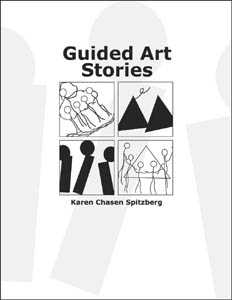
These audiocassette narratives give students a chance to visualize a picture, create their own piece of art, and then describe and explain what they have created.
First, a verbal description of the work of art is given, allowing the listener to visualize a picture in the mind’s eye. After listening to a story about the artwork, the student creates a storyboard or diorama based on the story. The final step is for the student to describe and explain the picture he or she has constructed. This becomes a valuable lesson in the power of descriptive language for blind and sighted students alike. Includes print guidebook and three audiocassettes.
Guided Art Stories: 1-09100-00…$22.00
COMING SOON!
Adult Life Catalog 2004-2005
The Adult Life Catalog contains a selection of items from the APH Products Catalog designed for adults who are visually impaired or have other special needs. Listings range from high-tech to low-tech solutions for independent living. New for this edition is a "Coming Soon" section, highlighting products in the development stage at APH.
The Adult Life Catalog 2004-2005 will be available in March, in print and on the web. Request a free copy by emailing catalogs@aph.org, or calling 800/223-1839.
REVISED! Student Starter Pack
You Recommended and We Listened!
The Student Starter Pack has been re-released with customer-requested 100# transcribing paper and a more durable aluminum slate. This kit of basic braille materials now contains 150 sheets of 100# 8 1/2 x 11 manila transcribing paper; 150 sheets of 100# 11 1/2 x 11 manila transcribing paper; a four line, 28-cell aluminum slate with Saddle Stylus, wooden eraser, and a Cranmer Abacus. Best of all, the price will remain the same!
Student Starter Pack: 1-00350-00…$41.00
NEW: Search the APH Web Site from the APH Home Page!
A convenient search box has been added near the top of the APH home page for the user who knows what he or she is looking for, but doesn’t know where to find it. Just type your keyword(s) into the search box and click the ‘search’ button and let our search engine locate the pages you’re looking for! Search capabilities are also located under Web Features > Searching APH.
From the APH Callahan Museum:
William Prescott and the Noctograph
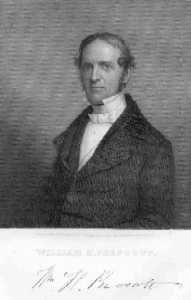
William Hickling Prescott, 1796-1859
William Hickling Prescott, noted American historian, was from a wealthy and influential Boston family who provided him with an excellent education. An accident, while he was a student at Harvard, resulted in severe visual impairment causing him to give up his study of law. He went on to graduate from Harvard in 1814 and lived his life as a gentleman-scholar and man of letters.
Prescott became interested in the history of Spain and employed secretaries to read historical Spanish manuscripts to him. His 1837 publication, The History of the Reign of Ferdinand and Isabella, was popular and widely-read by scholars and the general public. Prescott published his masterpiece, The Conquest of Mexico, in 1843. He was considered the nation’s first "scientific historian" for his use of manuscript sources.
Prescott possessed a phenomenal memory and composed whole chapters of his books in his mind during his morning horseback rides. He would then record them using a noctograph, a special writing device that produced carbon copies of his manuscripts. Prescott’s House, at 55 Beacon Street in Boston, where he lived from 1845 to 1859, is open to the public. Visitors can see the study where he wrote and the noctograph he used is displayed on his desk.
The APH Callahan Museum Noctograph
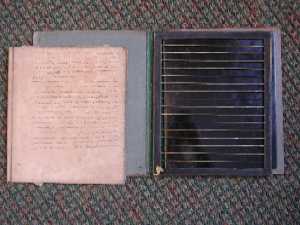
The noctograph in the Callahan Museum collection dates from about 1810. It measures about 8" x 10" and looks very much like many of the old pencil-writing guides – a hinged frame with wire guides, but it predates them by many years. With the noctograph are a packet labeled "Semi-Carbonic Paper" and a booklet containing copies of business correspondence from Copenhagen dated 1811.
In 1806 a patent was issued in England to Ralph Wedgwood for a "Stylographic Writer" which was designed to help blind people write. Because it was difficult for blind people to write with quill and ink, and pencils were not widely available, Wedgwood invented "carbonated paper." This "carbonated paper" was made by soaking paper in printers’ ink and drying it. It was fitted in the writing frame between two sheets of plain paper and a metal stylus was then used to transfer the ink onto the plain paper. The bottom sheet was the "original" which was sent out, while the top sheet, with writing in reverse, was the copy.
APH News Credits
President:
Dr. Tuck Tinsley
ttinsley@aph.org
Designer:
Malcolm Turner, APH Web Site Coordinator
webmaster@aph.org
Thanks to the following APH staff:
- Sandi Baker, Field Services Representative
- Karen Blaker, Support Specialist, Field Services
- Scott Blome, Director, Communications
- Gage Brogan, Test Coordinator and Security Specialist
- Maria Delgado, Field Services Representative
- Becki Moody, Support Specialist, Communications
- Julia Myers, Director, Resource Services
- Artina Paris, Assistant, Field Services
- Carol Tobe, Director, APH Callahan Museum
- Roberta Williams, Manager, Public Affairs and Special Projects
- Debbie Willis, Director, Accessible Tests
Editor:
Bob Brasher, Vice President, Advisory Services and Research
bbrasher@aph.org
For additional recent APH News, click the following:
January Issue – archive.aph.org/advisory/2004adv01.html
December Issue – archive.aph.org/advisory/2003adv06.html
November Issue – archive.aph.org/advisory/2003adv11.html
Archive of all previous issues – archive.aph.org/advisory/advarch.html

